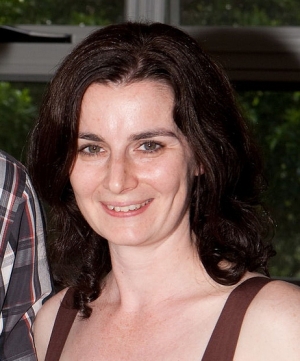Wetlands - wellsprings for carbon capture
Research news
In the battle against climate change, the role of rainforests in storing carbon is well understood - yet Deakin scientists believe that the humble swamp, or freshwater wetland, could be up to 50 times more effective.
Dr Rebecca Lester, an international expert on freshwater and estuarine ecology from the Centre for Integrative Ecology (CIE), has received a Thomas Davies Research Grant from the Australian Academy of Science to undertake an important wetland project with her Deakin colleagues Dr Peter Macreadie and Dr Jan Barton.
Dr Lester, who has worked on major projects in the Coorong, Murray-Darling Basin and the Colorado River, specialises in ecological response modelling, particularly in relation to the impact of human use on aquatic ecosystems.
She explained that biosequestration (carbon capture and storage through biological processes) is regarded as one of the single largest opportunities for reducing CO2 emissions in Australia.
In fact, Dr Lester and her colleagues are confident that wetlands will be a huge carbon sink that was missing in previous global carbon budgets, sequestering up to 33 per cent of the carbon in terrestrial soils, yet occupying only about four per cent of the earth’s land surface.
“While research on carbon capture has so far focussed on terrestrial and coastal ecosystems, such as carbon farming (agricultural) initiatives and so-called “blue carbon” capture through seagrass, recent data indicates that freshwater ecosystems could be up to 50 times more effective in carbon burial efficiencies, compared to land-based ecosystems like rainforests,” she said.
“One of the reasons that wetlands may be better than forests at carbon capture is because of the way that sediments and organic matter, such as leaves, build up under water. There, they are likely to break down more slowly, thus acting as a carbon sink,” she explained.
Once covering around 10 per cent of the earth’s land mass, wetlands, which are often seasonal, are defined as low lying areas that support plants and animals that rely on surface water.
They range from such high profile wetlands as Kakadu, or Victoria’s Hattah Lakes, to any local swamp.
Many, such as the Koo Wee Rup swamp in Gippsland, have been drained, as their characteristic build-up of organic matter makes excellent farming land. Yet, in the future, their agricultural value will have to be weighed against their value as carbon sinks.
“Despite the clear potential for wetlands to mitigate climate change, to our knowledge, this is the first study to quantify sequestration in temperate freshwater Australian wetlands, and one of few worldwide,” said Dr Lester.
The new project will undertake the first assessment of carbon stocks in south-west Victorian wetlands, as well as identifying the impact of wetland restoration on those stocks. A third crucial goal will be to define robust methods for measuring carbon stocks - through measuring pH and nutrient concentrations, for instance - so that rapid, affordable assessment can be made across large numbers of wetlands.
“The measurement tools will enable natural resource managers and landholders to reliably estimate and enhance their carbon sequestration, adding to the global effort in addressing climate change,” said Dr Lester.
“Our current usage of natural resources is unsustainable, and it is likely to become even more so under climate change. Quantifying ecosystem function, like carbon sequestration, under different management strategies is very important for applied ecology.”
Linked to a larger collaborative project, involving Flinders University, the University of Liverpool and the University of Arizona, the research will enhance the potential for improving wetland carbon sequestration across temperate and semi-arid ecosystems in Australia, the USA and Mexico.
Dr Peter Macreadie, who is also working on the project - and is sometimes known as “Dr Seagrass” - said preliminary data suggest that freshwater wetlands “could pack even more of a punch than the mighty seagrasses” in terms of bio-sequestration.
Early data from the wetlands show that the wetlands could be more than eight times more efficient at sequestering carbon than seagrasses.
“Since European settlement, we’ve drained around 85 per cent of Australia’s wetlands for urban development and farming purposes,” said Dr Macreadie.
“The problem with restoring (‘rewetting’) these wetlands is methane release; methane is a powerful greenhouse gas – much more than carbon dioxide - but fortunately it doesn’t linger in the atmosphere like carbon dioxide (approx. 12-15 years versus 120 years).
“Australia really needs to take a good hard look at opportunities for offsetting our emissions through aquatic carbon sinks, like freshwater wetlands. What we need to start thinking about is carbon farming initiatives for aquatic ecosystems.”
Dr Lester – who is happy with the appellation “Dr Wetlands” – looks forward to the time when wetlands are integral to urban and rural planning.
“Apart from the restoration and protection of regional public wetlands, new housing developments could also include more water features - and even rural dams could be turned into effective wetlands through growing wetland plants and other small changes,” she said.
Share this story
 'Dr Wetlands' - Dr Rebecca Lester.
'Dr Wetlands' - Dr Rebecca Lester.
